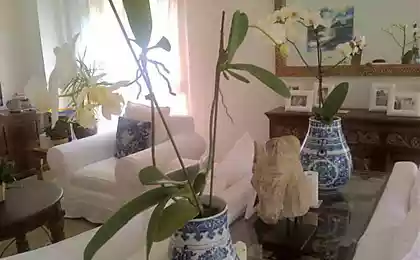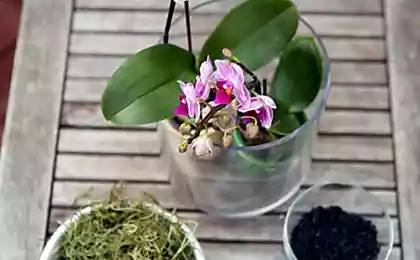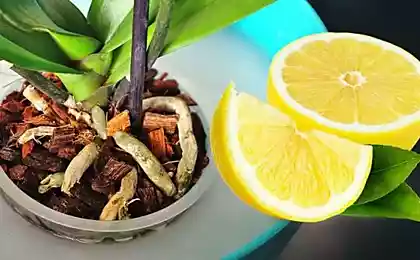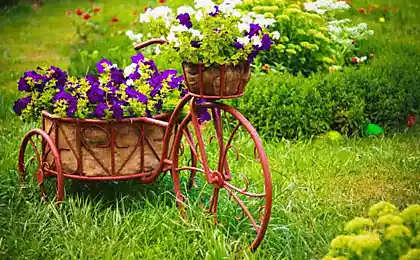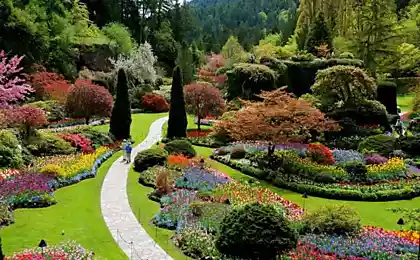618
Garden orchids: species, care and breeding.
Orchids are favorite flowers that today, in spite of a wide range of types and varieties are considered rare. But Orchid is not only room, but also garden plants, which, strange as it may sound, can be grown in our harsh climate, even in open ground.
Certainly, among the strange beauties there are whimsical types which are grown in the garden only as annuals or potted plants, but also among the less fanciful and more for the hardy types there is a remarkably beautiful plant with unusual and fascinating shapes of flowers. This is the real stars of the garden scene that can show off and be proud of, because so few growers are hesitant to grow these exquisite flowers.
Hardy and durable species of Orchid a bit room "brothers" primarily due to more massive and lush greenery, forming clumps. But by the grace of flowering they are sure they will not yield: form of the flowers of these plants with an asymmetrical structure and a massive protruding "lip" not to be confused with anyone. Elongated, with a sharp tip and projecting veins of the leaves of garden orchids a little like Lily of the valley and located alternately along the stems.
Combining the paradoxical strength and endurance with delightful charming beauty, they will dwell in gardens of exotic collection. Worldwide there are more than 10 species suitable for outdoor cultivation of orchids and their selection involved only the largest and most prestigious horticultural centers.
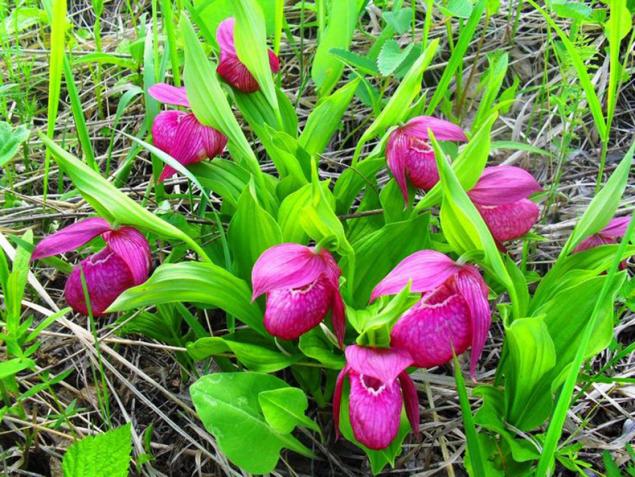
In fact, for growing in the garden in our area suitable, only three species of orchids, of which varietal diversity can boast of only one genus of orchids –Slipper (Paphiopedilum), in the florist is more commonly known as the lady's slipper. And wild Orchid called the lady's slipper and the other is the Queen's Slipper (Cypripedium reginae), and breeding hybrids Cypripedium macranthon "Emil", "Gisela", "Ingrid" in contrast to the room representatives of the genus are not so whimsical, but their beauty is worth all the effort to care.
For beginners and novice gardeners to choose better for a first acquaintance hybrid "Gisela" — hardy, good costamesa grade, forming a surprisingly dense clumps that are literally littered with numerous large cream flowers with a "lip" and the three brown purple pale petals. The hybrid "Gisela yellow" painting-like, but creamy yellow-green, petals transparent, making the colors glow in the evenings. The Shoe Queen "lip" at first delicate pink, but gradually turns into more bright Carmine, effectively stand out against the white petals at the top of the flower. The compact size of bushes and large flowers with dark purple stripes on the petals secrete a hybrid of "Michael".
But members of the family, the lady's slipper does not exhaust the range of orchids suitable for growing outdoors. On Sunny sites with calcareous soil are happy to settle , Which pchelovodny (Ophrys apifera), whose flowers look like a bizarre tropical insects. This garden Orchid blooms in late may or early June, revealing a spectacular flower stalks about 40 cm in height with an intricate floral "outfit" consisting of a colorful yellow-orange tubular flower, with two pointed bracts protruding pink color and speckled sponge with velvety furry lining. Many of the Orchid resembles a bee laughing in a funny yellow hat with pink wings.
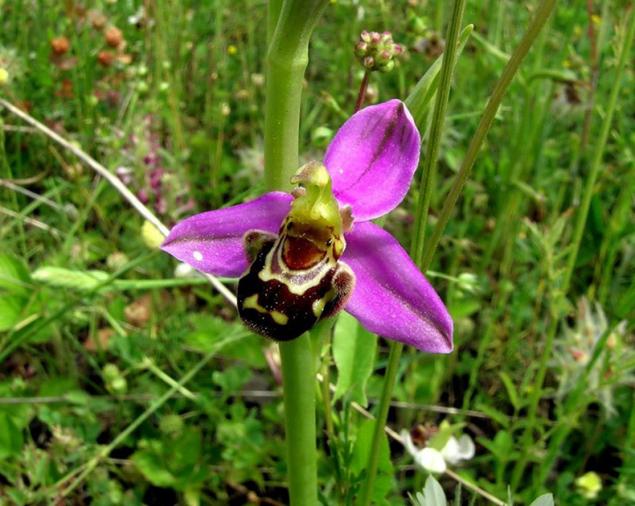
But bletilla striata (Bletilla striata) is a bit similar to exotic gladioli. On a long stalk and bloom dozens of delicate purple or pure white bells that seem to float above the low cortinas greens. This Orchid is in need of shelter for the winter, the requirements for growing it are the same as the "shoes".
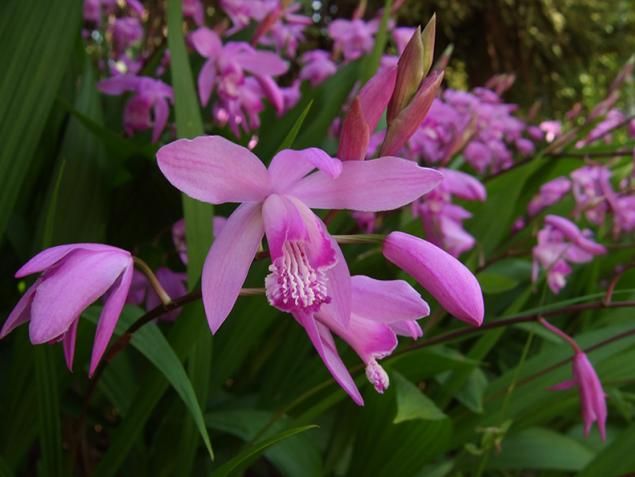
All representatives of the genus of Orchid lady's slipper grow well in partial shade, in a place where light, but the plants do not fall to direct sunlight. These orchids will be comfortable on the North side of buildings. Orchids of the genus Cypripedium do not like stagnant moisture, it is constantly in need moderately moist, loose; fine lumpy soil. When planting, lay drainage of ceramic shards, clay soil and add coarse sand or crushed expanded clay, and too light sandy — organic fertilizer. Field planting the soil around the shoes mulch or ceramic pellets, or peat. In winter the plants better to cover with dry leaves and twigs to protect from difference of temperatures, but not frost.
Propagated these amazing plants seeds, couching them only in special nutritious jelly when infected by a microscopic fungus. At home to grow this kind of Orchid is very difficult and in the first years of life the plant requires a very specific and meticulous care, sterile conditions and a significant time: under optimal conditions, they produce the first true leaf only after 4 years. As a result of the complexity of reproduction and high mortality of young plants the cost of plant this Orchid may exceed 30 euros.
To buy for planting should be only a strong, powerful adult hybrid plants that are already adapted to your climatic conditions and only in specialized centers and gardening stores. In no case do not buy orchids on the market: they are listed in the Red book, and in addition to the illegality of such a purchase will not yield results, because the plants will die in the first year. Only adults who have passed the selection of the trees from certified nurseries take root, and will quickly grow in your yard, creating a thick lush undergrowth after a couple of years.
Planted in the soil of the garden Orchid shoes only need in the autumn, and bletilla and a fly — only in the spring.
Orchids in the landscape design uses only one role — a bright, dominant exotic. They require careful selection of not only growing, but also partners. So, side by side with orchids can only grow low growing perennials, which will not compete with them and the beauty and pace of development. For example, good garden orchids combined with low ferns, kotulas, ateneu and small-leaved hosts. Can be planted in the background and low grasses. published
P. S. And remember, only by changing their consumption — together we change the world! © Join us at Facebook , Vkontakte, Odnoklassniki
Source: indasad.ru/ukhod-za-tsvetami/2620-sadovie-orchidei-vidi-uchod-razmnozhenie
Certainly, among the strange beauties there are whimsical types which are grown in the garden only as annuals or potted plants, but also among the less fanciful and more for the hardy types there is a remarkably beautiful plant with unusual and fascinating shapes of flowers. This is the real stars of the garden scene that can show off and be proud of, because so few growers are hesitant to grow these exquisite flowers.
Hardy and durable species of Orchid a bit room "brothers" primarily due to more massive and lush greenery, forming clumps. But by the grace of flowering they are sure they will not yield: form of the flowers of these plants with an asymmetrical structure and a massive protruding "lip" not to be confused with anyone. Elongated, with a sharp tip and projecting veins of the leaves of garden orchids a little like Lily of the valley and located alternately along the stems.
Combining the paradoxical strength and endurance with delightful charming beauty, they will dwell in gardens of exotic collection. Worldwide there are more than 10 species suitable for outdoor cultivation of orchids and their selection involved only the largest and most prestigious horticultural centers.

In fact, for growing in the garden in our area suitable, only three species of orchids, of which varietal diversity can boast of only one genus of orchids –Slipper (Paphiopedilum), in the florist is more commonly known as the lady's slipper. And wild Orchid called the lady's slipper and the other is the Queen's Slipper (Cypripedium reginae), and breeding hybrids Cypripedium macranthon "Emil", "Gisela", "Ingrid" in contrast to the room representatives of the genus are not so whimsical, but their beauty is worth all the effort to care.
For beginners and novice gardeners to choose better for a first acquaintance hybrid "Gisela" — hardy, good costamesa grade, forming a surprisingly dense clumps that are literally littered with numerous large cream flowers with a "lip" and the three brown purple pale petals. The hybrid "Gisela yellow" painting-like, but creamy yellow-green, petals transparent, making the colors glow in the evenings. The Shoe Queen "lip" at first delicate pink, but gradually turns into more bright Carmine, effectively stand out against the white petals at the top of the flower. The compact size of bushes and large flowers with dark purple stripes on the petals secrete a hybrid of "Michael".
But members of the family, the lady's slipper does not exhaust the range of orchids suitable for growing outdoors. On Sunny sites with calcareous soil are happy to settle , Which pchelovodny (Ophrys apifera), whose flowers look like a bizarre tropical insects. This garden Orchid blooms in late may or early June, revealing a spectacular flower stalks about 40 cm in height with an intricate floral "outfit" consisting of a colorful yellow-orange tubular flower, with two pointed bracts protruding pink color and speckled sponge with velvety furry lining. Many of the Orchid resembles a bee laughing in a funny yellow hat with pink wings.

But bletilla striata (Bletilla striata) is a bit similar to exotic gladioli. On a long stalk and bloom dozens of delicate purple or pure white bells that seem to float above the low cortinas greens. This Orchid is in need of shelter for the winter, the requirements for growing it are the same as the "shoes".

All representatives of the genus of Orchid lady's slipper grow well in partial shade, in a place where light, but the plants do not fall to direct sunlight. These orchids will be comfortable on the North side of buildings. Orchids of the genus Cypripedium do not like stagnant moisture, it is constantly in need moderately moist, loose; fine lumpy soil. When planting, lay drainage of ceramic shards, clay soil and add coarse sand or crushed expanded clay, and too light sandy — organic fertilizer. Field planting the soil around the shoes mulch or ceramic pellets, or peat. In winter the plants better to cover with dry leaves and twigs to protect from difference of temperatures, but not frost.
Propagated these amazing plants seeds, couching them only in special nutritious jelly when infected by a microscopic fungus. At home to grow this kind of Orchid is very difficult and in the first years of life the plant requires a very specific and meticulous care, sterile conditions and a significant time: under optimal conditions, they produce the first true leaf only after 4 years. As a result of the complexity of reproduction and high mortality of young plants the cost of plant this Orchid may exceed 30 euros.
To buy for planting should be only a strong, powerful adult hybrid plants that are already adapted to your climatic conditions and only in specialized centers and gardening stores. In no case do not buy orchids on the market: they are listed in the Red book, and in addition to the illegality of such a purchase will not yield results, because the plants will die in the first year. Only adults who have passed the selection of the trees from certified nurseries take root, and will quickly grow in your yard, creating a thick lush undergrowth after a couple of years.
Planted in the soil of the garden Orchid shoes only need in the autumn, and bletilla and a fly — only in the spring.
Orchids in the landscape design uses only one role — a bright, dominant exotic. They require careful selection of not only growing, but also partners. So, side by side with orchids can only grow low growing perennials, which will not compete with them and the beauty and pace of development. For example, good garden orchids combined with low ferns, kotulas, ateneu and small-leaved hosts. Can be planted in the background and low grasses. published
P. S. And remember, only by changing their consumption — together we change the world! © Join us at Facebook , Vkontakte, Odnoklassniki
Source: indasad.ru/ukhod-za-tsvetami/2620-sadovie-orchidei-vidi-uchod-razmnozhenie

